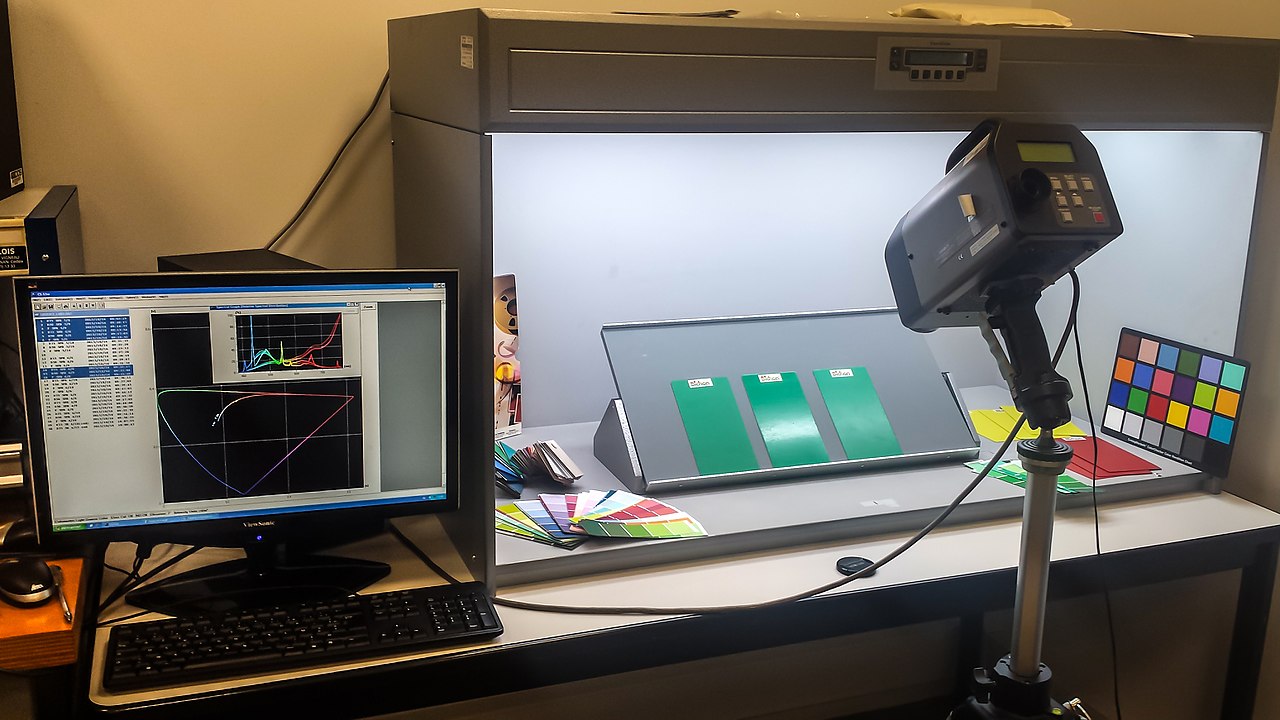
Five Things You Should Know About Color Viewing Conditions - Part 1
Part 1. Color Quality
While color and density measurements play important roles in the control of color reproduction, they cannot replace the human observer for final assessment of the quality of complex images. Color reflection artwork, photographic transparencies, photographic prints and photomechanical reproductions such as on-press and off-press proofs or press sheets, are commonly evaluated for their image and color quality or compared critically with one another for fidelity of color matching.
There is no doubt that the best viewing condition for the visual assessment of color is that in which the product will be finally seen. Therefore, Technical Committee ISO/TC 42 Photography in collaboration with Technical Committee ISO/TC 130 Graphic technology introduced the ISO3664:1975 (the first edition) standard viewing conditions for graphic technology and photography in 1975. In 2009, the third edition (ISO3664:2009) was released as to cancel and replace the second edition (ISO3664:2000).
This ISO3664 standard specifies a set of five conditions which all must be present in order to assure the benefits of this standard in critical color viewings. The five conditions include Color Quality, Light Intensity, Evenness, Surround and Geometry.
Color quality matters in three aspects: Chromaticity, Color temperature, Spectral power distribution.
-
Chromaticity
The reference spectral power distribution specified in ISO3664:2009 is CIE illuminant D50. According to the description from CIE 015:2018 (Colorimetry, 4th Edition), D50 is a relative spectral power distribution representing a phase of daylight with a correlated color temperature of approximately 5000K. D50 is a relative spectral power distribution representing a phase of daylight with a correlated color temperature of approximately 5000K, with the chromaticity coordinate of x=0.3457, y=0.3585 (CIE 1931 2° observer) and u’10=0.2102, v’10=0.4889 (CIE 1976 10° observer). Figure 1 shows the chromaticity coordinates in different color spaces. To understand CIE1931 and CIE 1976, please click here.

Figure 1. Chromaticity coordinates of D50 in different color spaces.
Normally CIE 1976 10° observer coordinates are widely used in color industries. The ISO 3664:2009 requires the chromaticity coordinates of a light source should be within a 0,005 radius of the D50 chromaticity coordinates.

Graph 1. Tolerance of chromaticity coordinates of D50.
-
Color temperature
In the ISO 3664:2009 standard, the color temperature of a light source is required to be relative to natural daylight with a correlated color temperature (CCT) of about 5000K. There is not a tolerance defined in standard. In fact, in real color viewing occasions, CCT is accepted when the chromaticity coordinates of a light source is within 0,005 radius of the D50 chromaticity coordinates.

Graph 2. Correlated color temperature (CCT) of CIE D50 in CIE1976.

Graph 2. Correlated color temperature (CCT) of CIE D50 in CIE1976.
-
Spectral power distribution
The ISO 3664:2009 standard provides a specific spectral power distribution between 300 nm and 780 nm for the D50 standard light source as required. Since D illuminants are based on the daylight curve that runs above the blackbody, D50 has a spectral energy distribution that closely matches that of a blackbody at 5000K.
Graph 3. Spectral energy distribution of CIE D50.
ISO3664:2009 has been technically revised by tightening the compliance tolerances on the ultraviolet portion of the D50 spectral power distribution. The metamerism index UV (MIuv) should be less than 1.5, compared with less than 4 in the ISO3664:2000 standard. This marks the very difference between the ISO 3664:2009 and ISO3663:2000. The metamerism index visible (MIvis) should be less than 1.0.
As for the CRI, the general CIE color rendering index of the observed surface should be measured above 90. In addition, according to CIE 13.3-1995, the specific color rendering index of each individual color sample 1-8 should be above 80. In Japanese JSPST-1998 standard for color viewing condition, it even strictly requires each Ri(i=1-15) should be above 90.
---------------------------------------------------------------------------------------
Yuji LED, the industry leader of high CRI LED phosphor and lighting, developed CRI 99 white LED, the world’s highest lumen density LED COB, full spectrum LED, and five-colors-in-one packaged LED for various lighting applications. After two years of R&D work, Yuji released its Standard Illuminant CIE D50 LED lamp that fully complies with ISO 3664:2009 and perfectly replaces the conventional fluorescent lamp in printing industry.
To know more about YUJILEDS, welcome to visit https://www.yujiintl.com and https://store.yujiintl.com

Leave a comment